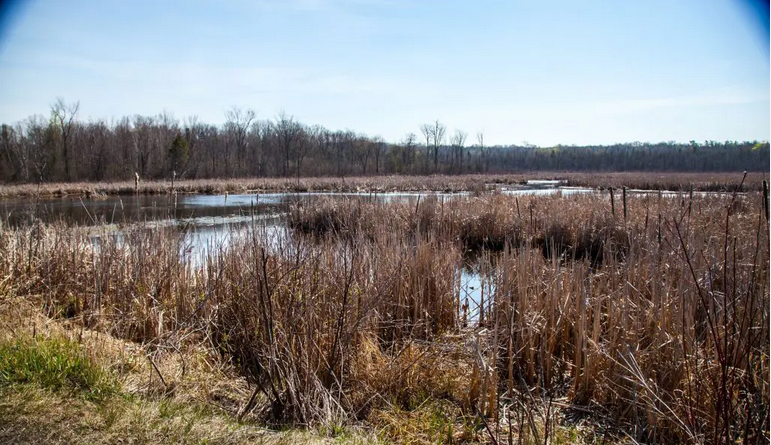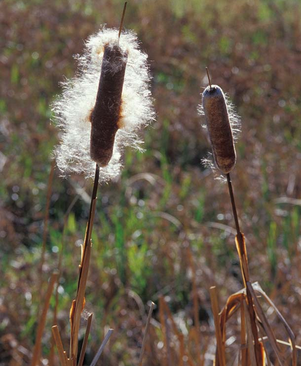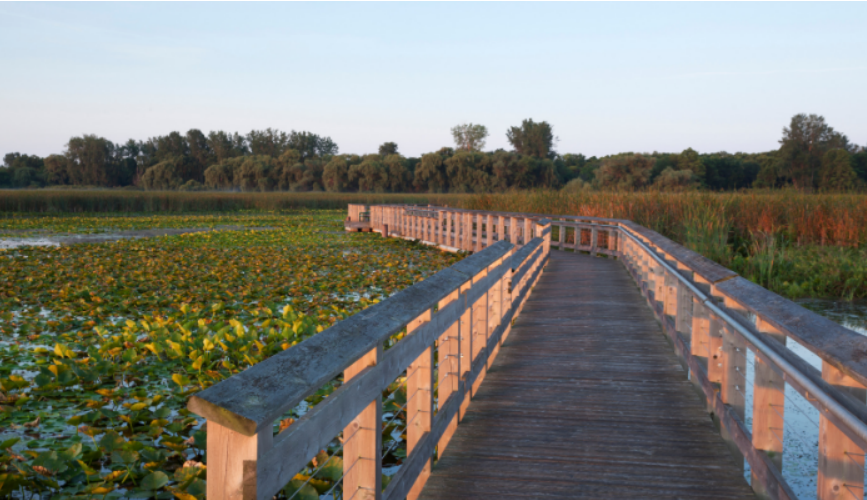 By Pepper Parr
By Pepper Parr
January 7th, 2023
BURLINGTON, ON
So just why are wetlands really important?
The Premier of the province wants to permit building on wetlands and has passed legislation that opens up parts of the province to development in places that were believed to be protected forever for the benefit of future generations, permanently off-limits to urbanization.
Established in 2005, Ontario’s Greenbelt, a swath of land that encircles the Greater Toronto Area, is an aggregation of farmland, river valleys and other natural features.

They are natural and are essential if climate changes are to be effectively managed.
Wetlands are the kidneys of the planet. Wetlands have the wonderful ability to remove pollutants from water, thanks to their luscious vegetation. Cattails, for example, aren’t just good for entertainment with seedy fluff that explodes in the wind. These iconic wetland plants are able to capture excess phosphorus and nitrogen, thereby preventing harmful algal blooms.
Even more amazingly, wetlands are able to get rid of 90% of water-borne pathogens. For us, this is crucial as wetlands recharge groundwater, which 26% of Canadians rely on for drinking water.

Where a natural wetland does not exist some communities are finding ways to create them.
Wetlands are now being constructed as natural infrastructure to clean stormwater. Canada’s largest constructed stormwater treatment wetland is located in Calgary, Alberta and is the size of approximately 150 football fields.
In the spring, wetlands are brimming with waterfowl, blackbirds and shorebirds as they nest and raise their young in the safety of reeds, grasses and stones. Not only is it a sanctuary for migratory and year-round birds, there are also fish species, frogs, turtles, muskrats, minks and beavers that are long-term residents. With deer mice and ground squirrels living in the grasses adjacent to wetlands and fish swimming in open water, this ecosystem is a favourite of osprey, eagles and hawks.
Let’s not forget about the itty bitty creatures that wiggle in wetland waters. Aquatic invertebrates, such as dragonfly nymphs and snails form the base of the wetland food chain and are equally as fascinating as other wetland life.

We know them as broadleaf cattail, bulrush, common bulrush, common cattail, cat-o’-nine-tails, great reedmace, cooper’s reed and cumbungi; their real name is Typha latifolia
Wetlands are masters at carbon sequestration
This process sucks in carbon and stores it in wetland soil. Unlike when a sibling hogs all the crayons, we are happy that wetlands hog carbons because it helps to regulate the climate. But, not all wetlands are equally skilled at holding onto carbon. Peatlands, including fens and bogs, collect ‘peat’ or partially decomposed plants and other organic matter (aka a wack tonne of carbon).
When peatlands are drained for agriculture, forestry or peat harvesting, carbon and nitrogen are released as greenhouse gases in the form of carbon dioxide and nitrous oxide. Approximately 25% of the world’s peatand are in Canada alone, with the Hudson Bay Lowlands as one of the worlds largest peatland systems.
Wetlands act like giant sponges
Another wetland superpower is their ability to act like a giant sponge. When the clouds open up and rain pours down, wetlands are able to absorb excess water. This means that wetlands act as a buffer against flooding. Now imagine the reverse situation. It’s dry and the land is parched, wetlands are able to release water back into the environment. In addition to their spongy talents, wetlands act as a protective barrier from storm surges along coastlines.
So much so that the mouth of Riviere du Nord in northern New Brunswick is being converted back to its natural state as a salt marsh.

Part of the Boardwalk at Point Pelee National Park
If we protect wetlands, it means that we get to enjoy all they have to offer! In the summer, they provide endless entertainment for recreational birders, photographers and casual park users with parades of waterfowl chicks and spats between Canadian geese. The water and wildlife can be explored by gliding through the wetland in canoes and kayaks.
Wetlands welcome family activities like pond-dipping to explore and learn about all the little creatures living in the marsh. In the winter, the frozen waters of wetlands can provide a surface for skating while the snow covered grasses surrounding wetlands provide the perfect opportunity to snowshoe and cross-country ski.
The wetlands are now facing real risk as the result of provincial government legislation.

Parts of the province where the risk becomes very real.
Related news story:
Are police investigating the purchase of are pieces of property.















I know everyone is crowing about the Premier opening up parts of the greenbelt, of which some are wet lands. Here’s the hard reality the way I see it and based on some of my professional experience with Environmental Assessments for water and wastewater infrastructure in the province. It’s clear that the red dots are at the edge of urban boundaries for many of the Regions and City of Toronto and City of Hamilton. This is where its cost effective to bring water and wastewater infrastructure to, it’s the low hanging fruit that will have minimal impact on development charges and hence cost of homes built. Many don’t understand this, but water and wastewater infrastructure is really the key to affordable development in Ontario, these are BIG and EXPENSIVE projects and is the main reason we have development around the lake. Once you get outside of water supplied by Lake Ontario and treated wastewater discharged to Lake Ontario it becomes very, very expensive for development as many of the water supplies are limited and the smaller streams and lakes cannot handle the treated wastewater discharge. There have been a host of “Big Pipe” projects and strategies to open up other areas for development outside of the golden horseshoe and options include Lake Huron, Lake Erie and of course Lake Ontario – these have been studied and discussed since the early 1990. (note there is a big pipe to London from Lake Huron) .
When these solutions get presented to smaller communities outside of the Golden Horseshoe, you can guess what the response is, yes full on NIMBYims. I was the Engineer on one such project, presenting at a school gymnasium in a small town that was overflowing and ready to lynch me and my colleagues for providing technical solutions for what was moderate growth.
So, here we have it, the Federal Liberal government raising immigration from 250,000 under Harper to currently 450,000 with plans to 500,000 driven by consultation with McKinsey & Company, high powered global consultants with deep ties to the liberal party. No plan by the feds to deal with housing created by this immigration tsunami. The Regions and two Cities around the golden horseshoe have greenspace that have essentially created a “moat” to growth. Smaller communities on the other side of that “moat” that do not want the “fabric” of the communities disrupted by “big pipe” solutions. So, we now have progressives in the golden horse are beating up on the Premier for a situation driven by Ottawa. I would suggest that anyone that now has an issue with development in Greenspace or Wetlands also write to our MP and PM (good luck both are tone deaf) to slowdown the rate of immigration until these environmental issues are solved. The solutions are out there, the costs are known, and some communities are not going to be happy with the answer.
Unfortunately, there is a shortage of homes due to previous provincial governments lack of foresight. The situation could have been planned differently if other governments saw this coming…perhaps developing other regions of province to entice people to move. It makes sense, especially with many jobs that are done remotely. Also, province could have implemented tax incentives to companies that promoted ‘work from home policies’. There are many possibilities to keep the numbers from growing…but that’s the thing…if you listen to Chamber of Commerce, they will talk about a shortage of workers…which is expected if you have crazy housing and renting costs. So now we are at that point where new home development needs to happen…if they don’t expand north, east or west…then how do you see this playing out.